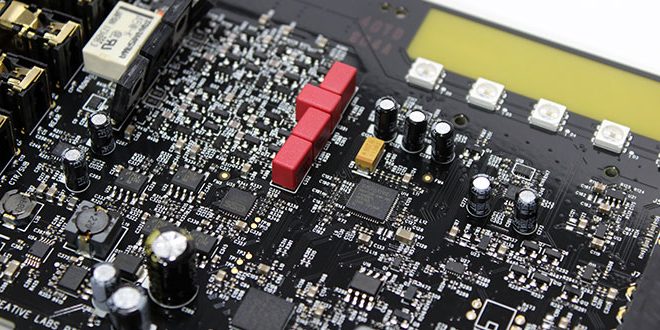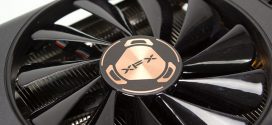Music Testing
Here we will take a look at various FLAC files ranging from classical, rock, country and even electronic music to see how the sound stage fares with the Sound Blaster AE-5 vs the motherboard integrated audio.
I would like to preface this by noting that I know there are a huge variety of external DAC, amplifier and even other audio card types available but I have to test these in a vacuum so to speak instead of going down the rabbit hole of the tens if not hundreds of other options at varying price points which are inherently an option as well. This testing is strictly to compare if the Sound BlasterX AE-5 is a viable and worthwhile alternative to the considered higher end motherboard integrated audio.
for motherboards I have the following to test
- ASUS Maximus X Formula
- ASUS Maximus XI Extreme
- Gigabyte Z390 AORUS Pro WiFi
- MSI MPG Z390 Gaming Edge AC
- MSi X299 Gaming M7 ACK
- Gigabyte X399 Gaming 7 (Supports Sound Blaster Connect Software)
Now with that noted you can see we have a nice cross section of boards with one even supporting the Sound Blaster Connect software.
Testing with the motherboard was as good as I could expect, as most all of them use the ALC1220 chipset, and the Realtek software in all honesty is pretty good with some adjustability along with predefined sound stage presets.
When I installed the Sound BlasterX AE-5 I was not expecting the defined difference I experienced.
First up was a cheaper Gaming headset I literally had hanging from my hardware rack as I wanted kind of a cheap toss around headset to give a clear idea of what you could expecto from a basic gaming perspective. The difference was staggering, even with cheaper driver quality I found the audio in electronic music to be much easier to discern between tones whereas with any of the motherboards I tested it did tend to be more bled together. Things god muddy quick with many instruments and tones melding together. With eh Sound BlasterX AE-5 I found I could select out specific tones and even instruments whereas before I simply did not have that level of clarity.
I then stepped up to some higher end cans to see how the experience changed and it was more of the same however at a much more defined level since the frequency response and clarity is much higher in higher end headsets. I found that the overall sound I got from the discrete card was as close to as possible to a night and day difference for me personally. I even brought in a secondary tester (my wife) to do a blind listen to some electronic music among other music familiar to her and she picked the audio from the Sound BlasterX AE-5 as being the best and clearest by far in every test sample I played for her.
I then Grabbed something which most might not consider and that is ear buds. I have some AKG ear buds I use while traveling and figured they would be an interesting test. The tiny drivers definitely got a bit more punch to them when driven from the Discrete card but to mirror the other tests, the real tell was in the clarity. There was no point where I found the tones mudding together and I could still discern specific instruments or sounds even with the tiny drivers.
Lastly I grabbed my other travel cans which are what I call the “middle of the road set” which are Bose QC25’s. I jacked them in and it was more of the same. the headset boasted a more pronounced bass response along with having a much smoother transition between highs and lows with a defined reduction in mud in the middle ground.
I am no audiophile by any means and not an expert in audio but the difference between the audio I have lived with for years form a motherboard and thought was good enough just got flipped on its lid.
Game Testing
Gaming tests is where I was interested to see the difference and once again I was not disappointed. While the motherboard audio performed admirably, I did find that the Sound BlasterX AE-5 allowed for an easier ability to discern between different sound sources especially in live fire scenarios such as FPS games where gunfire and explosions cause cause things to get confusing very quickly.
The games themselves do alot of the audio control as far as what sounds you hear and from where so there were scenarios where you cannot control the fact that an explosion deadens your ability to hear another noise. But when for instance multiple people are moving around you in a game like PUBG, I found it much easier to pick out who was moving above me vs around the sides of me.
I did enable the scout mode for a few minutes and I would indeed consider it unfair as it heightened the intensity at which you hear people sneaking around you. However one thing to note is that the boosted sounds can actually be disorienting at least in my case as I began to get overwhelmed and it became harder to discern people who were 2 building away vs right outside where I was at the moment. I think that Scout stuff is better left off.
Moving to a Racing game such as Forza 7 which is my current racer of choice. I found that the audio once again was much clearer with a much easier to pinpoint sound origins such as vehicles racing around me and where I should expect them without even needing to rotate my players camera angle to look.
While the Discrete card made a huge difference you are going to notice short comings very quickly on a cheaper headset as I found quality of drivers are very important to audio reproduction. I think that comes as a surprise to nobody but its something I felt worth noting as you should definitely plan on investing in a solid headset if you plan to game with teh Sound BlasterX AE-5 just to ensure you get the best possible performance whether it be listening to music or media, or you are gaming.
Now lets wrap it up.
 Bjorn3D.com Bjorn3d.com – Satisfying Your Daily Tech Cravings Since 1996
Bjorn3D.com Bjorn3d.com – Satisfying Your Daily Tech Cravings Since 1996









very nice review, you did not mention though, that the direct HP / speaker port will allow for 32bit / 384khz – whereas the other ports are 32/96 🙂
love my card, paired with DT 990Pro 250ohm studio headphones.
alot of onboard audio using the ACL1220 codec for example, will apply audio compression when you enable the equializer, making the sound sound like it is “stopped” from reaching its peak – its terrible, muddy and unclear.
like you, i found the difference to be like night and day.
https://imgur.com/a/5QHgXgy
looks good too!
Wow, that looks really nice 🙂
Thank you for the feedback, as you can see I always try to add as much information as I can, but sometimes things do slip by.
Yes, it really did make a rather noticeable difference.
I was blown away of how much better the Audio is into my B&O headphones with the AE-5…. Why are Soundcards/DAC’s so forgotten!!!
Well they aren’t lol, nobody remotely interested in audio uses onboard soundcards. There are just a bunch of people online nowadays who follow the “it’s digitial and it all sounds the same”, which is of course nonsense. The best part is that 99,99% of those people have zero experience with remotely high quality headphones or audio setups, and their opinions are based on what someone else told them. Any time someone tells you there is no difference between on-board sound cards and external DAC’s or separate high quality sound card, just block out anything else they say about the topic because they clearly lack basic knowledge and have zero experience, or are just flat out deaf.
lol, I tend to agree, but I have also playted in a band in what seems like a previous life… The amount of difference between even the ‘high end’ or tweaked codecs/solutions (I use the word high-end very loosely when referencing any onboard audio) I see quite an improvement even in a simple card like the AE-5. There are far better solutions but for most users, this would be a huge step forward.
““it’s digital and it all sounds the same” The amount of times I have heard this line makes me absolutely cringe. I gave up arguing with people about this sort of stuff. ignorance is bliss for them.
Iam new to this and have the HC V 770 and trying to figure out what software I need to get / edit videos from sd card for facebook or youtube . Please help , thanks
Most of the comments are the usual ridiculous audiophool nonsense one would expect.